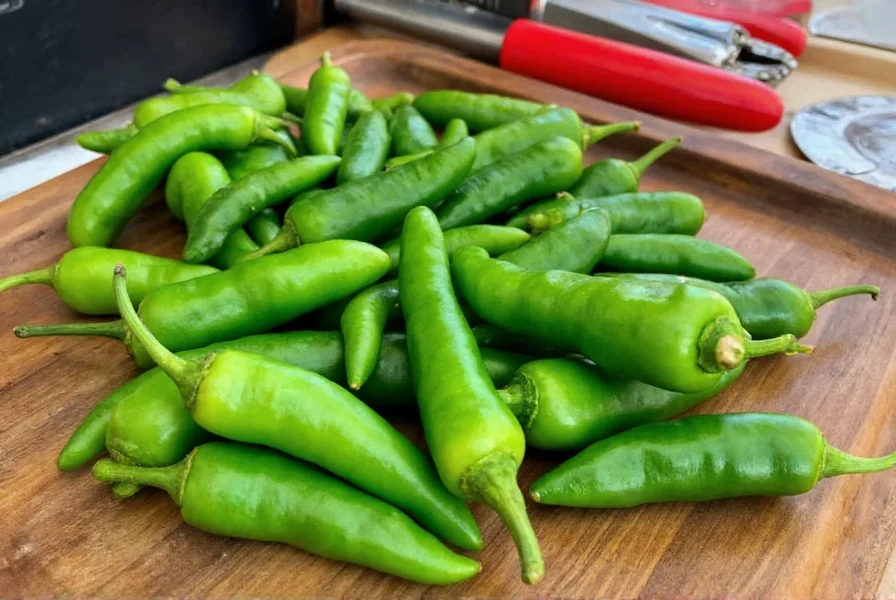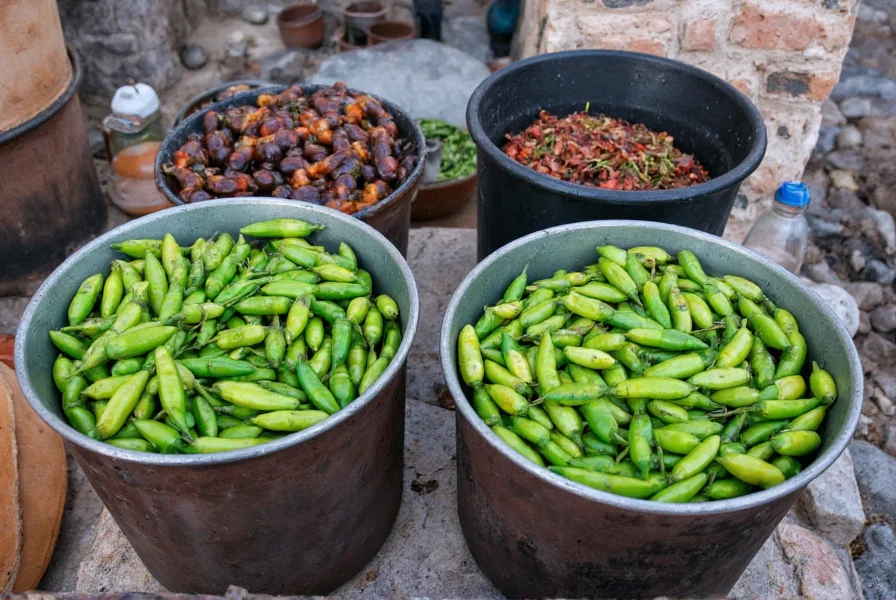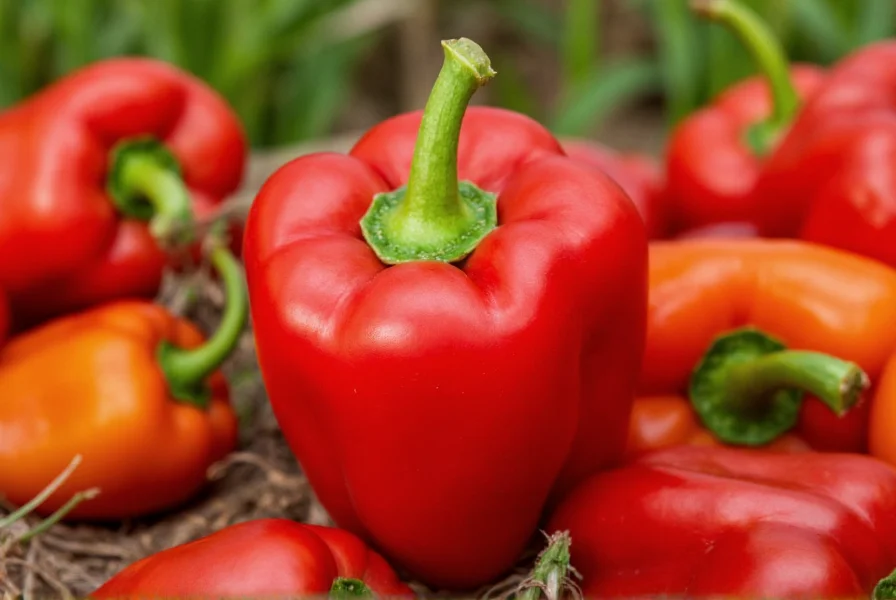Hatch chili peppers represent one of America's most celebrated regional ingredients, prized for their complex flavor profile and versatility in Southwestern cuisine. These distinctive green chilies grow exclusively in the fertile floodplain of the Rio Grande in New Mexico's Hatch Valley, where the combination of high altitude, intense sunlight, and mineral-rich soil creates ideal growing conditions. The unique terroir of this 30-mile stretch between Artesia and Elephant Butte gives Hatch chilies their signature taste that imitators cannot replicate.
The Origin Story of New Mexico's Signature Pepper
Despite common misconception, Hatch chilies aren't a single cultivar but rather a collection of New Mexico-style green chilies grown specifically in the Hatch Valley region. The name comes from the town of Hatch, New Mexico, which serves as the commercial hub for this agricultural area. Chile cultivation in this region dates back over 400 years to Spanish colonization, with modern varieties developed through careful breeding by researchers at New Mexico State University.
What distinguishes authentic Hatch chilies from other green chilies is their strict geographical origin. True Hatch chilies must be grown in the Hatch Valley region, similar to how Champagne must originate from France's Champagne region. This geographical indication protects the integrity of what has become a culturally significant crop for New Mexico.

Understanding Hatch Chili Varieties and Heat Levels
Hatch chilies come in multiple heat varieties that correspond to different stages of ripeness and specific cultivars:
| Variety | Scoville Heat Units | Flavor Profile | Best Uses |
|---|---|---|---|
| Mild (Big Jim) | 500-700 | Grassy, vegetal, slightly sweet | Stuffed peppers, sauces, mild salsas |
| Medium (No. 6, Sandia) | 1,500-2,500 | Earthy with noticeable heat | Enchiladas, burritos, cheese dishes |
| Hot (Lumbre, Espelette) | 5,000-30,000 | Sharp heat with smoky undertones | Hot sauces, spicy stews, adventurous cooking |
Unlike jalapeños or habaneros which maintain consistent heat levels, Hatch chilies' spiciness varies dramatically based on growing conditions, water availability, and harvest timing. This natural variability makes each season's crop unique. The peppers develop more capsaicin (the compound that creates heat) when stressed by drought conditions, resulting in hotter harvests during dry years.
Hatch Chile Season: Why Timing Matters
The limited availability of fresh Hatch chilies creates annual culinary excitement across the United States. The harvest season runs from late July through September, with peak availability in August. During this brief window, farmers throughout the Hatch Valley work around the clock to harvest, roast, and distribute the perishable crop.
Understanding when is Hatch chili season proves crucial for enthusiasts. The peppers' flavor changes dramatically after harvest—they're best used within 3-5 days fresh, though freezing preserves their quality for year-round use. Many grocery chains now offer frozen roasted Hatch chilies outside the harvest season, though connoisseurs argue these lack the vibrant freshness of just-picked peppers.
The seasonal nature of authentic Hatch chilies explains why imitations abound. Many products labeled "Hatch-style" or "Hatch variety" actually contain chilies grown outside New Mexico. True Hatch-certified peppers bear the Hatch Chile trademark, guaranteeing their New Mexico origin.

Mastering the Art of Roasting Hatch Chilies
Proper roasting transforms Hatch chilies from simple ingredients into culinary stars. The charring process develops complex flavors through the Maillard reaction while loosening the tough outer skin. Here's the professional method for roasting Hatch chilies at home:
- Wash fresh chilies and pat dry
- Place directly over gas flame, in broiler, or on grill
- Rotate frequently until skin blisters and blackens (8-12 minutes)
- Transfer to paper or plastic bag for 10-15 minutes to steam
- Peel away charred skin, remove seeds if desired
- Store in airtight container with 1-2 tablespoons of liquid
The roasting technique significantly impacts the final flavor profile of fresh Hatch chili peppers. Outdoor roasting over mesquite or pecan wood adds subtle smokiness, while indoor methods using a broiler produce cleaner flavors. Many Southwestern restaurants feature open-air roasting drums during harvest season, creating both culinary and aromatic experiences.
Culinary Applications and Flavor Pairings
Hatch chilies' versatile flavor profile makes them suitable for countless dishes. Their earthy, slightly sweet character with grassy notes complements both simple and complex preparations. When developing Hatch chili pepper recipes, consider these classic pairings:
- Cheese: Melts beautifully with Monterey Jack, cheddar, and queso fresco
- Eggs: Essential in Southwestern breakfast dishes and omelets
- Seafood: Complements fish and shrimp without overpowering delicate flavors
- Chicken: Infuses poultry with subtle heat and complexity
- Tomatoes: Creates balanced salsas and sauces with complementary acidity
For home cooks wondering how hot are Hatch chilies compared to other varieties, they generally fall between poblano and serrano peppers in heat intensity. The mild varieties work well for family meals, while the hot versions satisfy spice enthusiasts. Unlike many chilies, Hatch peppers develop more nuanced flavors as they ripen to red, offering different culinary possibilities throughout their growth cycle.
Hatch vs New Mexico Chilies: Understanding the Distinction
Many consumers confuse Hatch chilies with generic New Mexico chilies. While all Hatch chilies are New Mexico chilies, not all New Mexico chilies are Hatch chilies. The key differences:
- Geographical indication: Only chilies grown in the Hatch Valley region can be called Hatch
- Certification: Authentic Hatch chilies carry the Hatch Chile trademark
- Flavor consistency: Hatch Valley's specific terroir creates distinctive flavor notes
- Seasonality: True Hatch chilies have a defined summer harvest window
This distinction matters significantly for culinary applications. Chefs seeking authentic Southwestern flavors prioritize genuine Hatch chilies during harvest season, while recognizing that properly stored frozen Hatch chilies maintain quality for year-round use. Understanding these differences helps consumers make informed choices when searching for where to buy Hatch chilies.
Frequently Asked Questions
What makes Hatch chili peppers different from other green chilies?
Hatch chili peppers grow exclusively in New Mexico's Hatch Valley region, where specific soil composition and climate conditions create their distinctive earthy, slightly sweet flavor with grassy notes. Unlike generic green chilies, authentic Hatch varieties develop unique characteristics from this terroir, similar to how Champagne must originate from France's Champagne region.
When is Hatch chili season and why is it limited?
Hatch chili season runs from late July through September, with peak availability in August. The season is limited because these peppers grow only in southern New Mexico's Hatch Valley region and must be harvested at precise ripeness. The hot summer climate creates ideal growing conditions, but the peppers become too ripe for optimal flavor if left on the plant beyond early fall.
How hot are Hatch chilies compared to other common peppers?
Hatch chilies range from mild (500-700 Scoville units) to hot (5,000-30,000 Scoville units) depending on variety and growing conditions. Mild Hatch chilies are comparable to poblanos, medium varieties approach jalapeño heat, and hot varieties reach serrano-level spiciness. Unlike many peppers, Hatch chilies' heat level varies significantly based on water availability and harvest timing.
What's the best way to store fresh Hatch chilies?
Fresh Hatch chilies last 3-5 days in the refrigerator's crisper drawer. For longer storage, roast, peel, and freeze them in airtight containers with 1-2 tablespoons of liquid (water, broth, or olive oil). Properly frozen Hatch chilies maintain quality for 10-12 months. Never store fresh chilies in plastic bags, as trapped moisture accelerates spoilage.
Can I substitute other chilies for Hatch in recipes?
While not identical, you can substitute Anaheim peppers for mild Hatch varieties, poblano peppers for medium heat levels, and serrano peppers for hot Hatch chilies. For authentic flavor, look for New Mexico chilies grown outside the Hatch Valley region. The distinctive earthy-sweet flavor of true Hatch chilies comes from the specific terroir of southern New Mexico's Hatch Valley.











 浙公网安备
33010002000092号
浙公网安备
33010002000092号 浙B2-20120091-4
浙B2-20120091-4